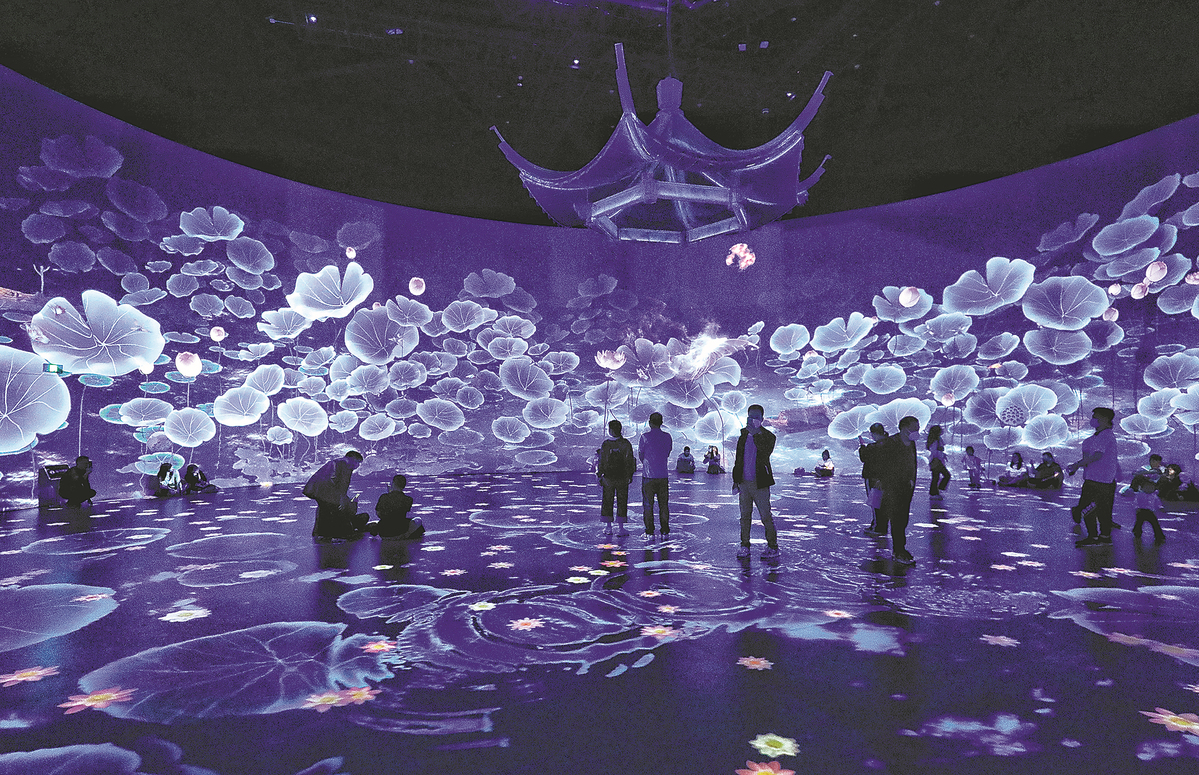Museums place sustainability in the spotlight


Gold ingot
Yang Jingbin, an associate researcher at the Fujian Museum, said that when Chinese navigator Zheng He from the Ming Dynasty (1368-1644) made his seven westward voyages, his fleets mainly comprised Fujian vessels.
Also on display is an inscribed gold ingot weighing nearly 2 kilograms unearthed from the tomb of Zhu Zhanji, a son of emperor Zhu Gaochi (1378-1425) in the Ming Dynasty. The inscription states that the raw material for the ingot was bought overseas by Zheng during his fifth voyage.
"It is the only artifact to date with a clear inscription that shows it is related to Zheng's voyage. It was given as a gift to Zhu Zhanji to mark his engagement," Yang said.
The exhibition also features a variety of porcelain, silk and teas, which used to be major export commodities.
Such artifacts provide clues to cultural links. For example, a blue-and-white porcelain candlestick from the Ming Dynasty is highly similar to a bronze candlestick from West Asia in the 14th century.
"It shows the mutual influence of both cultures, reflecting the harmonious symbiosis of ancient times," Yang said.
White porcelain made in Dehua county, Fujian, was a highly important commodity shipped overseas. To illustrate its history, an exhibition of Dehua white ceramics has also opened at the Fujian Museum.
Bai Ming, a professor at Tsinghua University's Academy of Arts and Design, said white ceramics from Dehua have long been known as top-grade Chinese porcelain, as they were shipped overseas in ancient times. In the West, they were known by the French in the 19th century as Blanc de Chine, or "white from China".
In the Song Dynasty, the Dehua Kiln began to prosper from maritime trade, and in the late Ming and early Qing (1644-1911) dynasties, white porcelain became a highly prized commodity from the kiln.
Huang Weiwei, a guide at the exhibition, said customized white porcelain was shipped overseas at the start of the Ming Dynasty.
Two white ceramic statues of Adam and Eve are believed to be examples of such products. The statues, produced by the Dehua Kiln, are now stored at the Fujian Museum.
"It seems that Chinese artisans made such statues based on their imagination. Although the figures depicted by the statues are half-naked, they are very different from those made overseas. Their movements seem to be restricted, as if they don't know where to put their hands, and they look as though they want to hide their semi-naked bodies," Huang said.
"There are few historical records about ancient craftspeople in China, but through their work we gain a glimpse of how they reacted to Western culture and their understanding of this culture."


















